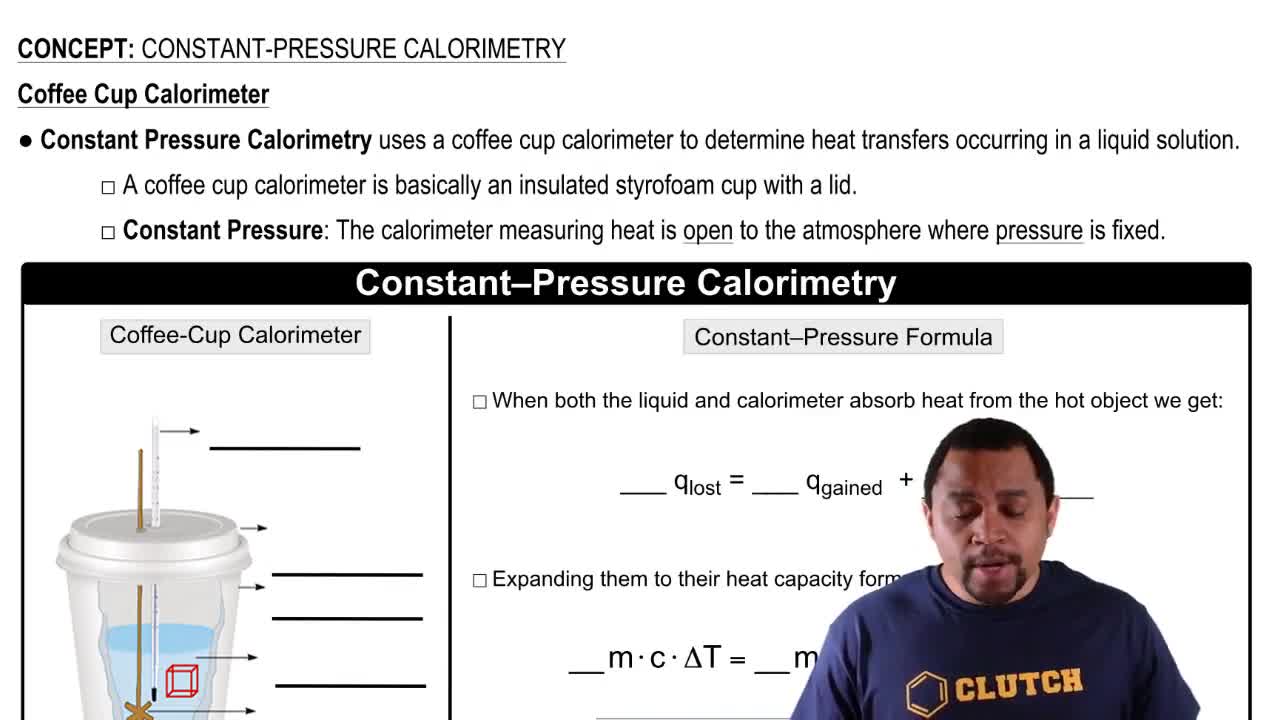Here are the essential concepts you must grasp in order to answer the question correctly.
Enthalpy Change (_x001F_H)
Enthalpy change (_x001F_H) is a measure of the heat absorbed or released during a chemical reaction or physical process at constant pressure. A negative _x001F_H indicates that the system releases heat to the surroundings, which is a key characteristic of exothermic processes.
Recommended video:
Exothermic vs. Endothermic Processes
Exothermic processes are those that release energy, usually in the form of heat, to the surroundings, resulting in a temperature increase in the environment. In contrast, endothermic processes absorb energy from the surroundings, leading to a temperature decrease. The sign of the enthalpy change helps determine the nature of the process.
Recommended video:
Endothermic & Exothermic Reactions Example 2
Constant Pressure Conditions
Constant pressure conditions are often encountered in chemical reactions occurring in open systems, where the pressure remains stable throughout the process. Under these conditions, the enthalpy change is directly related to the heat exchanged, making it easier to classify the reaction as either exothermic or endothermic based on the sign of _x001F_H.
Recommended video:
Constant-Pressure Calorimetry
 Verified step by step guidance
Verified step by step guidance

